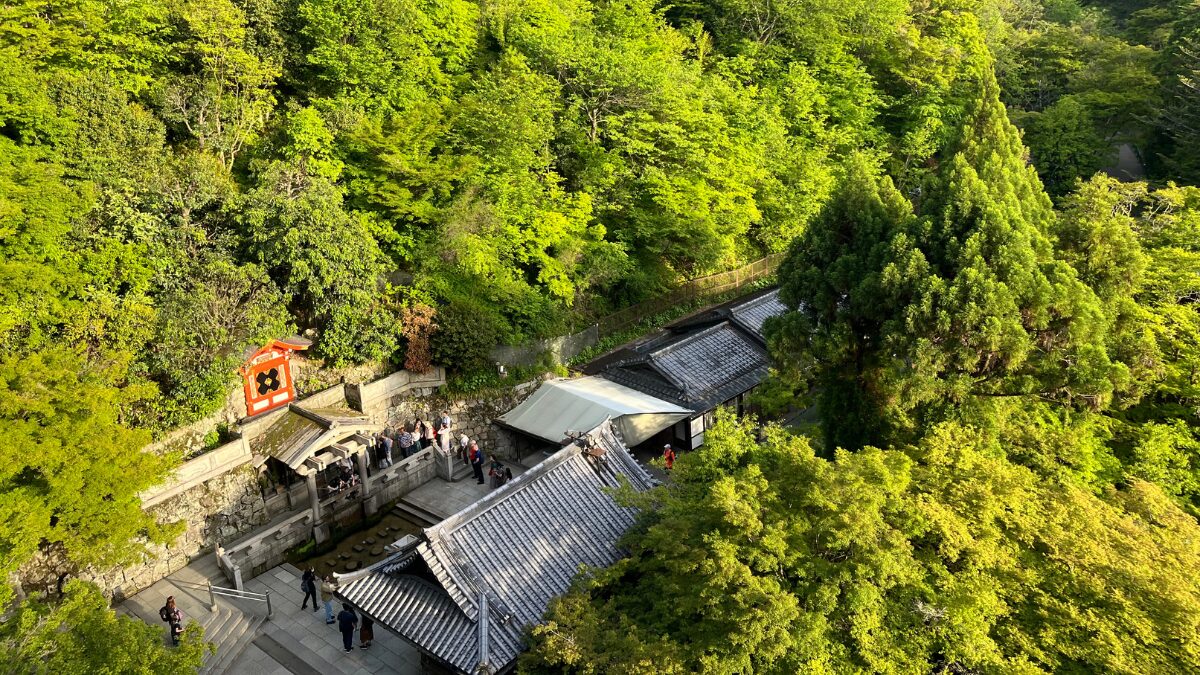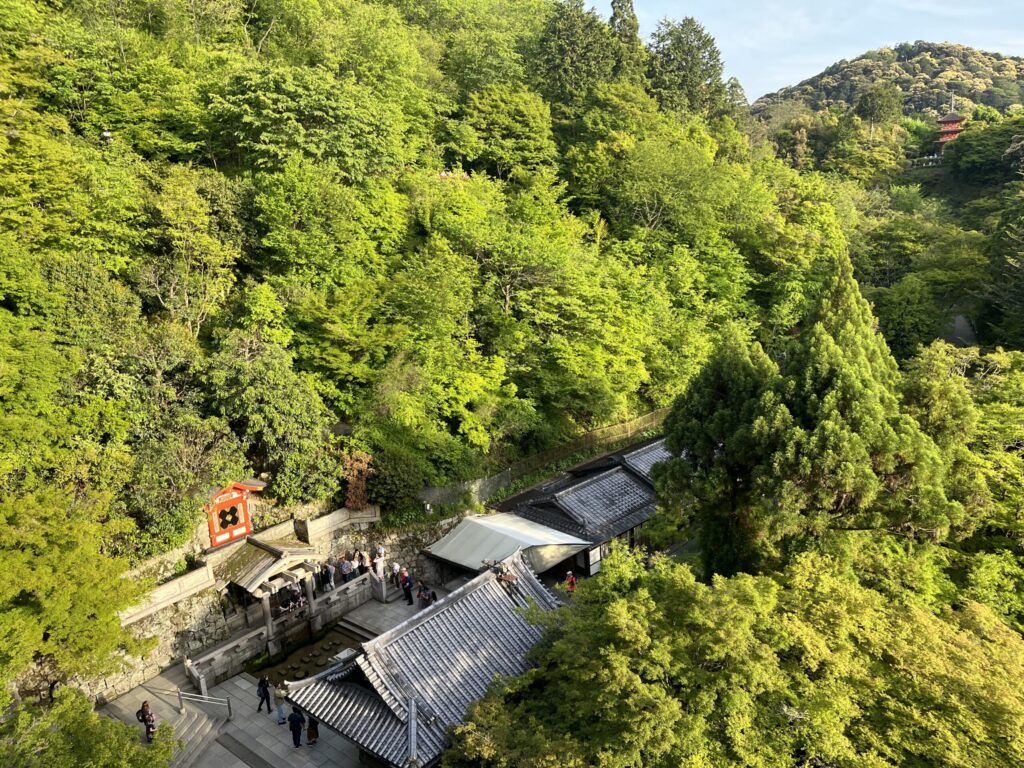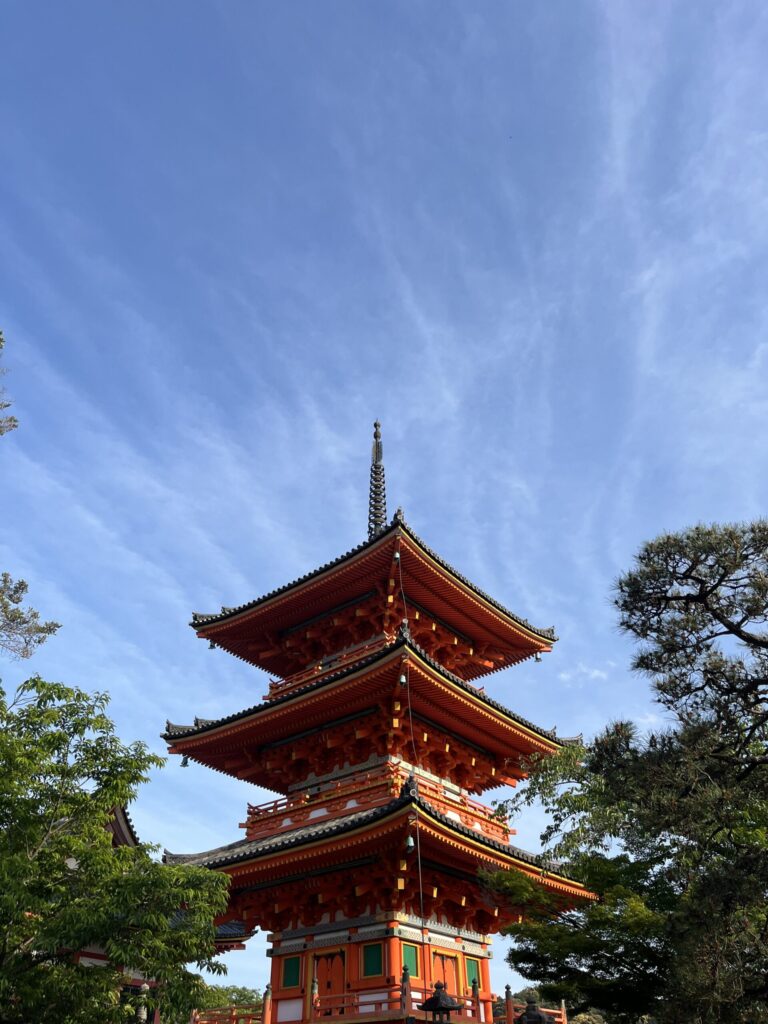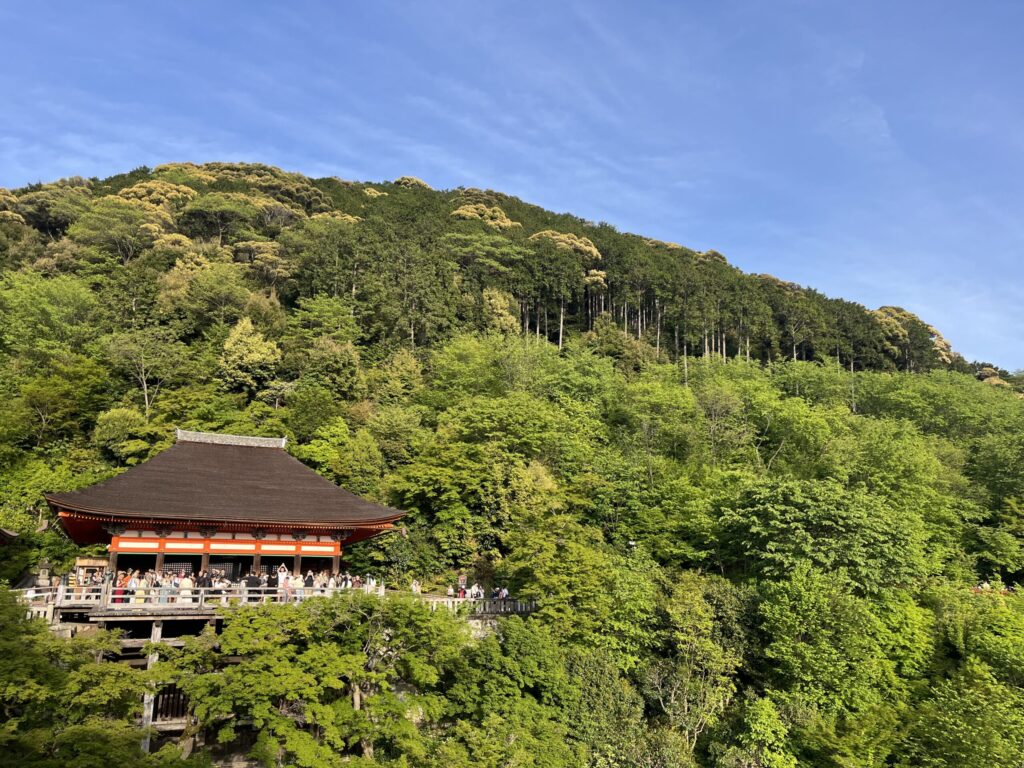Why OEH is the Perfect Home Base for Kyoto Day Trips
Osaka English House (OEH) is the ideal home base for making day trips to explore Kyoto’s beautiful temples. With Hirakatashi Station located only a 10 minute walk from OEH, you will be well-connected to Kyoto with frequent trains.
Kyoto is one of the most popular cities to visit in Japan, resulting in high hotel prices. Hirakata offers a great alternative for travelers, with more affordable accommodation, including OEH. It is a great option for budget-minded travellers who don’t mind a short commute and who want to experience an authentic Japanese residential area.
Transportation Information
The most convenient and affordable way to make a day trip to Kyoto is with the Keihan Main Line train from Hirakatashi Station. Several types of service are offered, including Local, Semi-Express, and Limited Express trains. It will depend on where exactly you are going in Kyoto, but generally Limited Express trains will be your best option to get into the city quickly. For example, with a Limited Express train, you can reach Shichijo Station in Kyoto in only 24 minutes for ¥370. Both Semi-Express and Limited Express trains will depart at least every 12 minutes, so you will never be waiting long. Just make sure you get on the train in the correct direction (towards Demachiyanagi) – otherwise, you will end up in Osaka! Be sure to check transit apps like Google Maps or Navitime for the most up-to-date information, including exact departure times.
It is possible to take a taxi to Kyoto, but this will take just as long as public transportation and will be much more expensive, so taking the train is the recommended option.
Eastern Kyoto Temple Route
Visiting temples in Eastern Kyoto is a great way to start your temple tour through the city. These temples are popular for a reason, offering rich experiences for nature, history, and architecture buffs alike.
Morning: Kiyomizu-dera & Surrounding Area
Start your day early at Kiyomizu-dera, one of the most famous temples in Kyoto. Founded in 778, this ancient Buddhist temple offers stunning architecture and sweeping views over Kyoto.
To reach Kiyomizu-dera from Hirakatashi station, hop on a Limited Express train until you reach Shichijo Station. You can then take city bus #206 until you arrive at Kiyomizumichi bus stop, and then walk approximately 650 metres to reach the temple. The total trip time will be approximately 55 minutes and will cost ¥600 yen. Alternatively, you can take the Limited-Express train to Gion-Shijo station and then enjoy a 30 minute walk through the beautiful streets of Kyoto to the temple, with total travel time being approximately 1 hr 10 minutes and cost ¥370.
The temple complex is large, with around 30 buildings nestled into a beautiful forested area. You will likely need 1 or 2 hours to see the highlights, though you could easily stay longer if you wanted to make a more in-depth visit. The temple offers stunning views of the surrounding area (particularly from the wooden stage), which is especially nice during spring cherry blossom or fall foliage seasons. During certain seasons, the temple is open late for nighttime illuminations, where trees on the temple grounds are lit up with beautiful lights. For the most up-to-date information including seasonal opening hours, admission costs, and special events, be sure to check the temple’s official website.
After Kiyomizu-dera, you can consider visiting some other temples in the surrounding area, such as Kodai-ji (10 to 15 minutes walk away and known for zen gardens and a bamboo grove) or Shoren-in (25-30 minutes walk away and known for peaceful gardens and camphor trees).
Afternoon: Philosopher’s Path
After a busy morning of exploring temples, it will be time for lunch. For the classic Japanese budget lunch, head to a konbini (convenience store). For ramen, consider eating at Men-dokoro Maruto. Hisago (located near Maruyama Park) is a good option for rice bowls and noodles.
After lunch, head towards the Philosopher’s Path. This is a 2 km stone path along a canal that Japanese philosopher Nishida Kitaro walked daily to meditate. The path begins at Ginkaku-ji temple and ends at Nanzen-ji temple (though you can walk the Path in either direction). Along the route you will pass several small temples and shrines, including Honen-in, Otoyo Shrine, and Kikan-do. There are also some charming cafes and boutiques. The Path is extremely popular during cherry blossom season as it is lined with trees, so while the views will be spectacular, expect heavy crowds.
If you are up for a walk and want to see more temples and shrines along the way, it is possible to reach Nanzen-ji temple, where the Philosopher’s Path begins, by foot from Kiyomizu-dera. From Kiyomizu-dera, walk through Ninenzaka and Sannenzaka streets before passing Kodai-ji temple and Yasaka Shrine, through Maruyama Park and then past Chion-in and Shoren-in temples. Then head northwest until you reach Nanzen-ji Temple, where the southern end of Philosopher’s Path begins. Alternatively, you can head to bus stop Kiyomizu-michi and take the city bus #100 or #206, getting off at Ginkau-ji-michi or Ginkaku-ji-mae stop and walking about 5 minutes to the northern end of the Path at Ginkaku-ji temple.
Returning to Hirakata
After a busy day of exploring temples in Kyoto, it will be time to head back to Hirakata. Hop on the train (towards Yodoyabashi), and get off at Hirakatashi Station. Hirakata offers many great options for dinner. For restaurant recommendations in Hirakata, check out great dining options in our article [Best Izakayas in Hirakata: Where Locals Go After Hours].
Northern Kyoto Temple Route
While most tourists visit the temples in Eastern Kyoto, be sure to check out the equally beautiful temples in Northern Kyoto!
Morning: Kinkaku-ji & Ryoan-ji
Start off your morning at Kinkaku-ji temple! To reach it from Hirakatashi Station, hop on a Limited Express train until you reach Demachiyanagi Station. There are then several options for taking a bus to the temple, so check out Google Maps or Navitime Japan for real-time travel information. The train and bus will take approximately 1 hour 15 minutes and will cost about ¥680.
Once you reach the temple grounds, you can check out the Golden Pavilion (which is covered in real gold leaf), the Mirror Pond, and take a stroll on the landscaped walkways dotted with shrines, statues and viewing spots. A thorough visit will likely take about 1 hour.
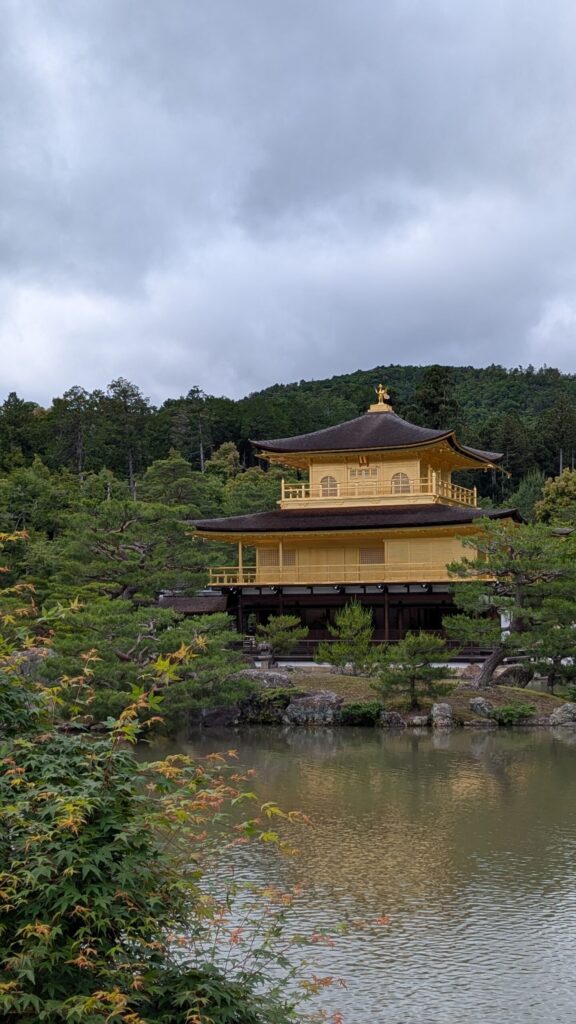
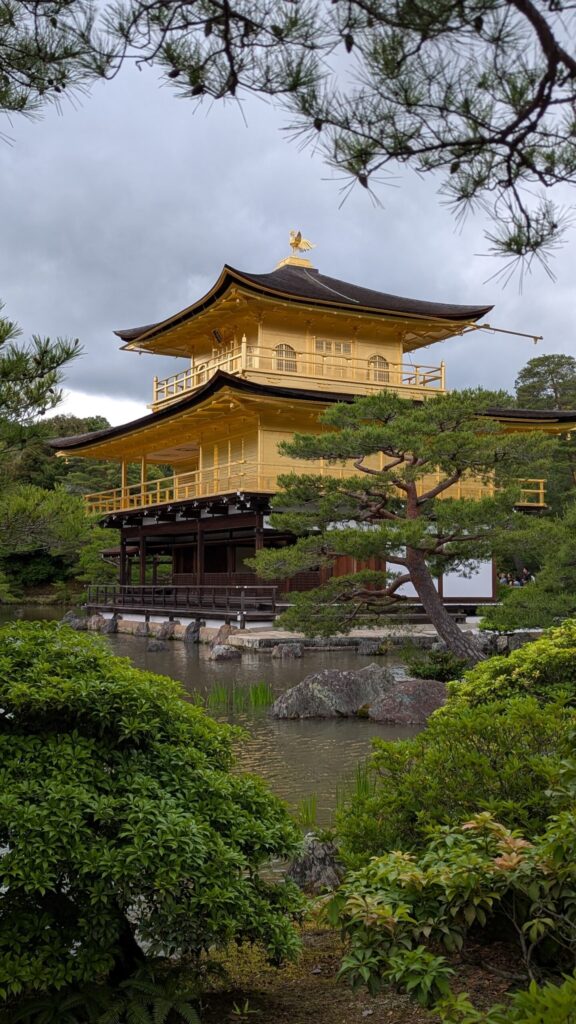
Next, you can head to Ryoan-ji temple. From Kinkaku-ji, is a pleasant and flat 20-25 minute walk along Kinukake-no-michi road. Alternatively, you can take city bus #59 from Kikaku-ji-mae stop to Ryoan-ji-mae and then walk about 5 minutes to the temple entrance.
Ryoan-ji is a Buddist temple that translates to “Temple of the Dragon at Peace” and is famed for its rock garden. It features a Zen garden with 15 stones which you can view from a veranda. From any angle, you will only be able to see 14 of the 15 stones. It is said that you will see the 15th stone once you obtain the Buddhist state of Enlightenment. The grounds also feature a beautiful pond and peaceful walking paths through forested areas. If you visit in the spring, you will be able to see camellias and plum blossoms in addition to the sakura. Minimalist, peaceful, and generally not as crowded as other temples in Kyoto, this is the perfect place to reflect, relax, or meditate in silence.
Afternoon: Ninna-ji & Nearby Temples
After grabbing lunch at one of the many nearby restaurants, it will be time to head to Ninna-ji Temple. To get there from Ryoan-ji, walk west along Kinukake-no-michi road. It will take around 15 minutes and is flat and peaceful. Alternatively, you can take the city bus #59 from Ryoanji-mae bus stop to Omuro Ninna-ji bus stop and then walk 3 minutes to the temple.
One of the most notable buildings on the grounds is the Goten, which served as the residence of imperial monks. It includes elegant rooms with painted sliding doors. The grounds are also home to a 5-story pagoda and unique cherry trees known as omuro-zakura which bloom later than the rest of Kyoto – typically mid to late April.
If you still have some energy after visiting Ninna-ji, other temples in the area include Myoshin-ji, Toji-in, and Koetsu-ji.
Essential Tips for Kyoto Temple Day Trips
Advice for Visiting Temples
- To minimize crowds, start early, avoid weekends, and avoid peak seasons (like cherry blossoms or fall foliage).
- Wear comfortable shoes as you will be on your feet most of the day. When entering temples, you will likely be asked to remove your shoes, so it is also helpful to wear socks.
- Be mindful that you are visiting sites that are holy for many people. While there is no official dress code, it is best to dress neatly and modestly.
- Bring cash as admission to some temples is cash-only.
FAQs: Day trips to Kyoto from Hirakata
The most affordable and fastest way to get to Kyoto is with the Keihan Main Line train from Hirakatashi Station.
No, you cannot use your JR Pass on the Keihan Line because it is operated by a private railway company.
Kyoto is very popular with tourists, so you should expect crowds. Try visiting temples early in the morning or later in the afternoon to avoid midday when crowds are typically heaviest.
Admission cost varies by temple but expect to pay between ¥300 and ¥800 per adult. While temples usually have an admission fee, shrines often offer free admission.
The temples in Kyoto can be visited year round, but they are especially beautiful (and also more crowded) during cherry blossom and fall foliage seasons.

